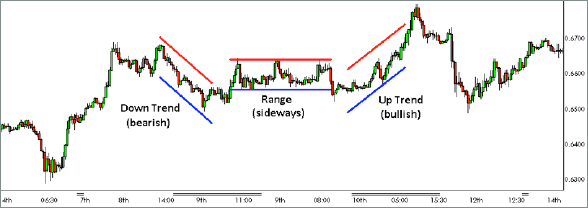As a seasoned forex trader, I’ve witnessed the intrinsic value of technical analysis in navigating market complexities. Embarking on this transformative journey, I discovered the power to predict price movements, optimize trading decisions, and maximize profitability. Join me as we unravel the intricacies of technical analysis in forex, a key tool for empowering traders like you to achieve financial success.

Image: beste-mt4-indikatoren.blogspot.com
Unveiling Technical Analysis
Technical analysis is the art of deciphering historical price data to forecast future price trends. By scrutinizing price charts, indicators, and patterns, traders gain insights into supply and demand dynamics, market sentiment, and potential trading opportunities. Unlike fundamental analysis, which evaluates economic factors influencing currency values, technical analysis solely focuses on price action.
Chart Types and Patterns: Essential Building Blocks
Price charts provide the foundation for technical analysis. Candlestick and bar charts visually represent price movements over time, capturing opens, highs, lows, and closes for each time interval. Recognizing chart patterns, such as trend reversals (double tops/bottoms) and continuation patterns (flags/pennants), aids in identifying buying and selling opportunities.
Moving Averages: Taming Price Volatility
Moving averages (MAs) smooth out price fluctuations by calculating the average price over a predefined period. MAs act as dynamic support and resistance levels, indicating potential price trends. Traders commonly utilize the 200-day MA and 50-day MA to identify long-term and intermediate-term trends, respectively.

Image: theforexscalpers.com
Oscillators: Gauging Market Momentum
Oscillators measure the momentum of price movements, identifying overbought and oversold conditions. The Relative Strength Index (RSI) and the Stochastic Oscillator are widely used oscillators that fluctuate between 0 and 100. When an oscillator reaches extreme highs or lows, it signals potential price reversals.
Trend Analysis: Capturing Market Direction
Trend analysis involves identifying major market trends and trading in the direction of the trend. Ascending and descending trendlines, drawn along higher highs and lower lows, define the market’s overall directional bias. Following the trend increases the probability of profitable trades as traders ride the prevailing market momentum.
Tips and Expert Advice
Embrace Trend-Following Strategies: Align your trades with prevailing market trends to avoid swimming against the current.
Manage Risk Prudently: Utilize stop-loss orders to limit downside potential and protect your capital.
FAQs
Q: Is technical analysis reliable?
A: Technical analysis provides valuable insights into price movements but is not a foolproof method. However, it can significantly enhance trading performance when used in conjunction with other strategies.
Q: How much time is needed to master technical analysis?
A: Developing proficiency in technical analysis is an ongoing process, requiring consistent study, practice, and refinement. It can take months or even years to become proficient.
How To Do Technical Analysis In Forex
Conclusion
Technical analysis is a powerful tool that empowers forex traders to make informed decisions and capture profitable trading opportunities. Its multifaceted nature requires patience, practice, and an unwavering dedication to learning. If you possess the drive to master this invaluable skill, the rewards await. Embark on this transformative journey today and unlock the secrets of successful forex trading.
Tell us, if you found this in-depth guide on how to do technical analysis in forex intriguing! Share your questions or insights in the comments below.






